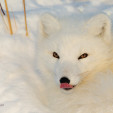On our trip to Manitoba, we were hopeful we would get to see and photograph at least one Arctic fox. They are gorgeous, interesting animals. We knew however that while the location we were headed to usually had Arctic foxes that last year they had none. Seems some red foxes showed up and that meant the Arctic foxes had to move on.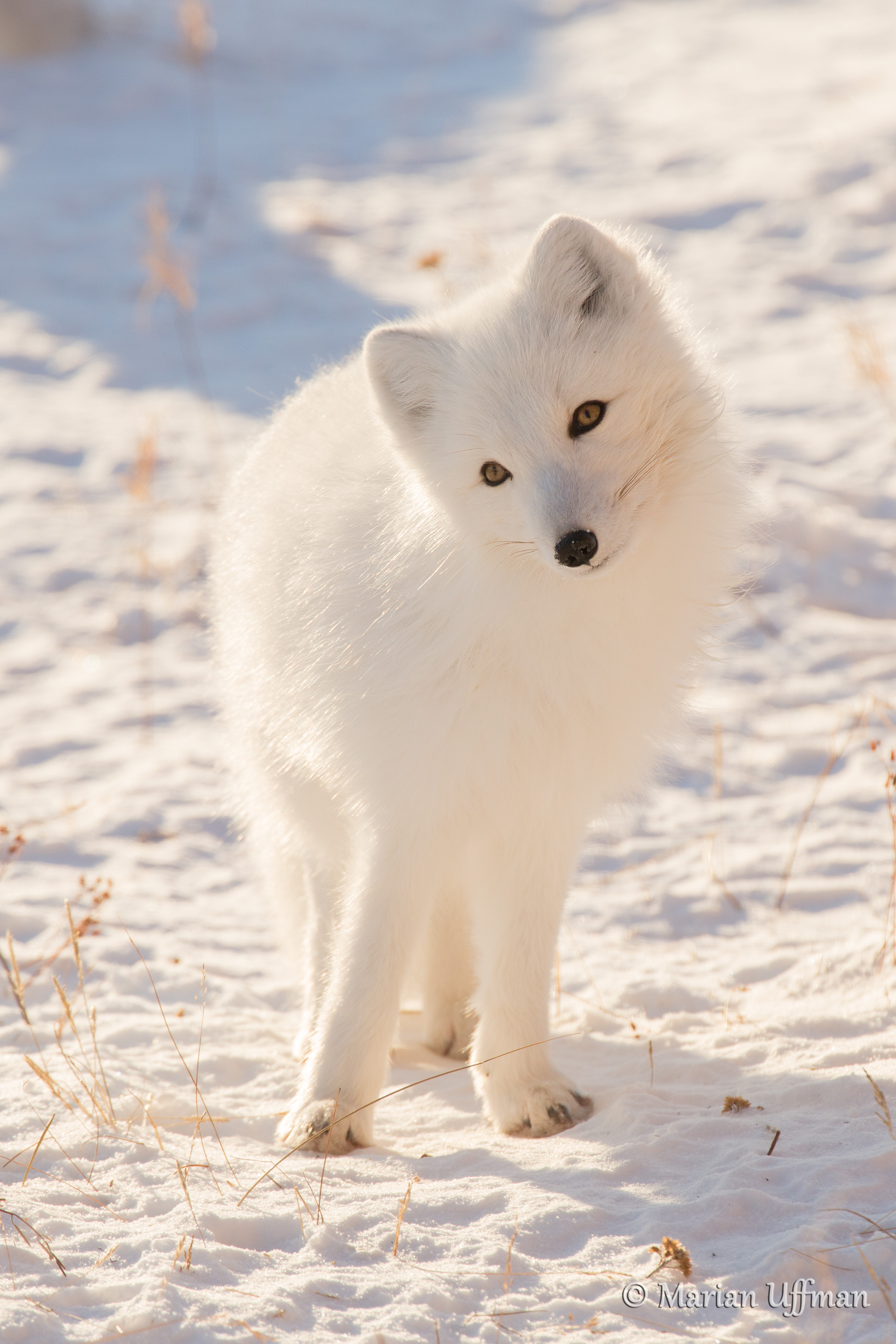
Great news is that this year the Arctic foxes returned and not just a few but in significant numbers. How lucky is that? We were able to photograph them everyday in all sorts of situations. Sleeping, stretching, yawning, jumping, eating, running and so much more. In fact we often could capture multiple foxes in a single image if that is what we wanted.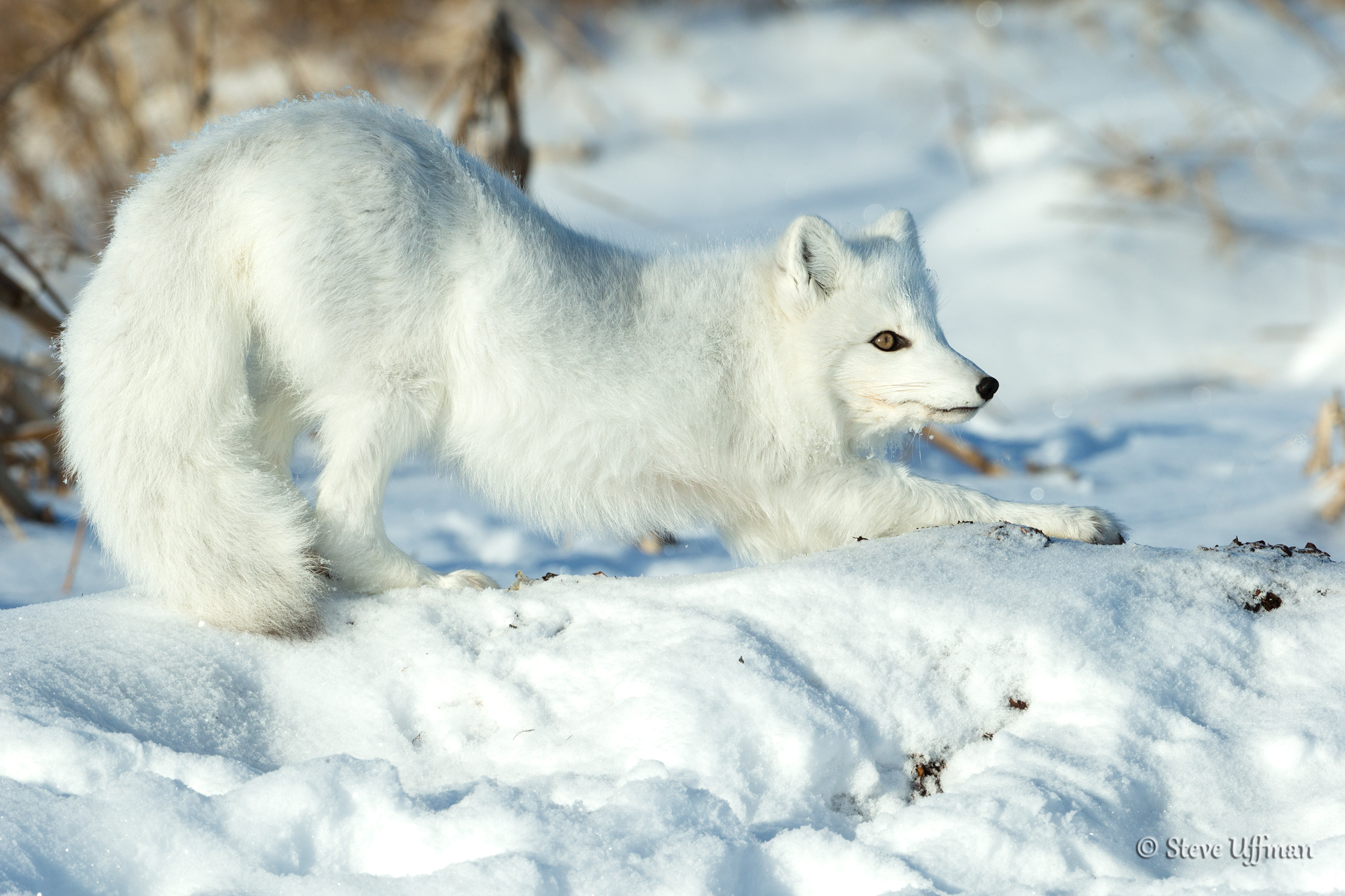
Arctic foxes are best known for their beautiful white winter coats but they are not always white. 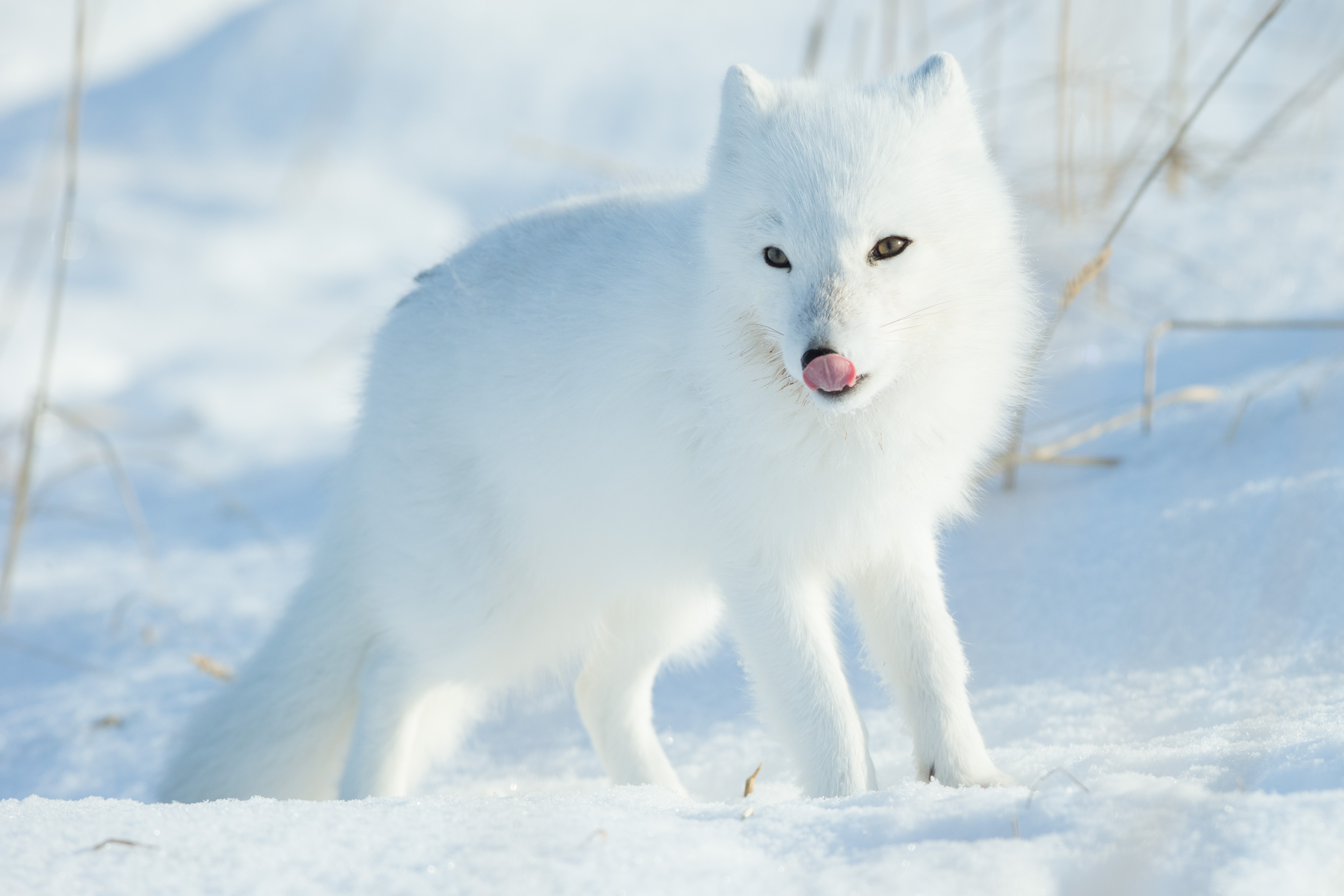 Some in the winter time will be blue gray and some will have a mixture. We were fortunate to photograph one very interesting specimen that had this mixture.
Some in the winter time will be blue gray and some will have a mixture. We were fortunate to photograph one very interesting specimen that had this mixture. 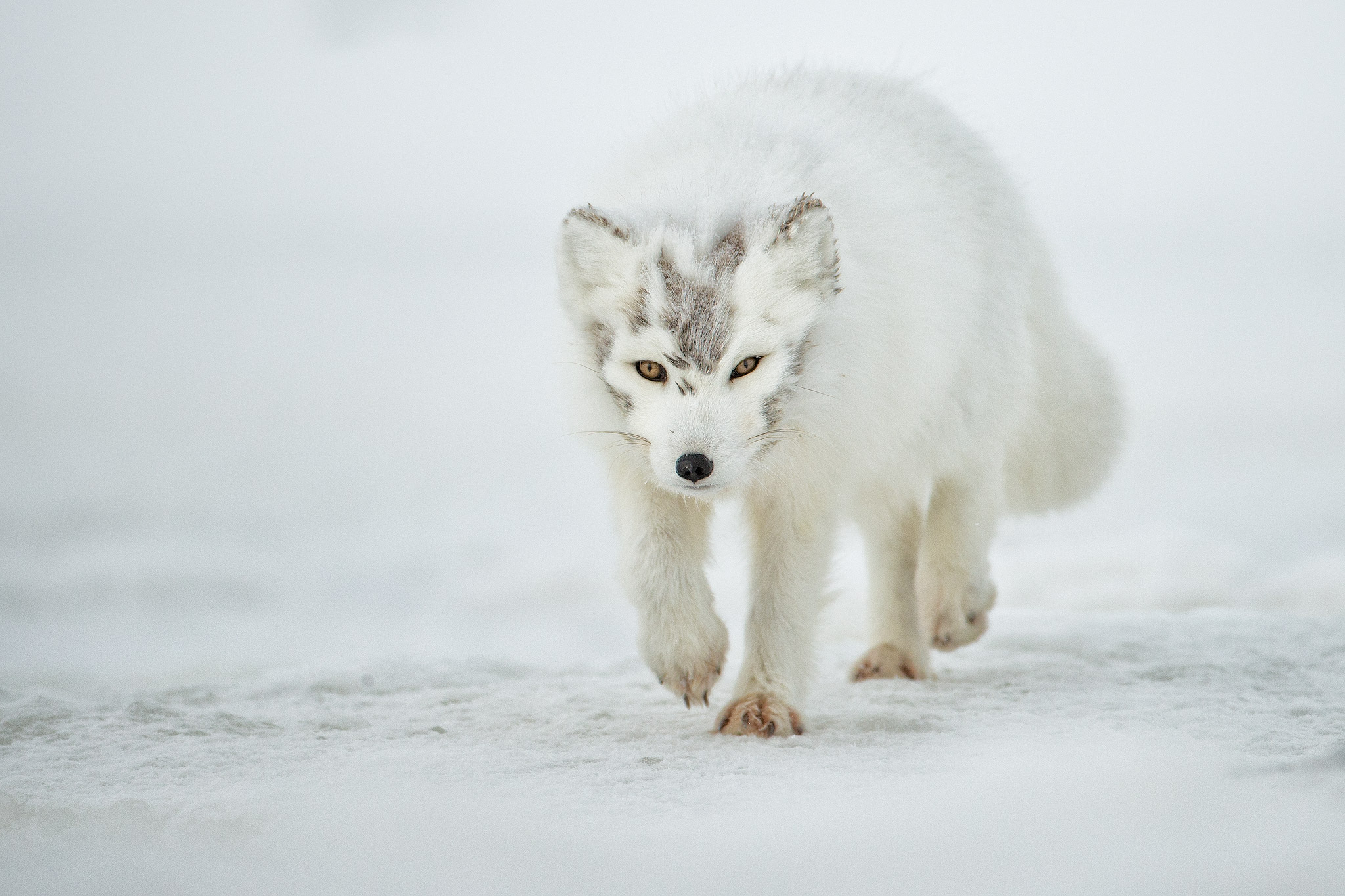 Both of these colorations serve as excellent camouflage during the tough winters. Other times of the year, the Arctic foxes turn brown or gray to also help them blend in with the surrounding rocks and tundra of the spring and summer.
Both of these colorations serve as excellent camouflage during the tough winters. Other times of the year, the Arctic foxes turn brown or gray to also help them blend in with the surrounding rocks and tundra of the spring and summer.
These foxes in the winter are known to follow the apex predator of the area-the polar bear when food is scarce. They will feed on whatever scraps the Polar bear leaves-but when times are tough, even the polar bear scat becomes a food source for these foxes. 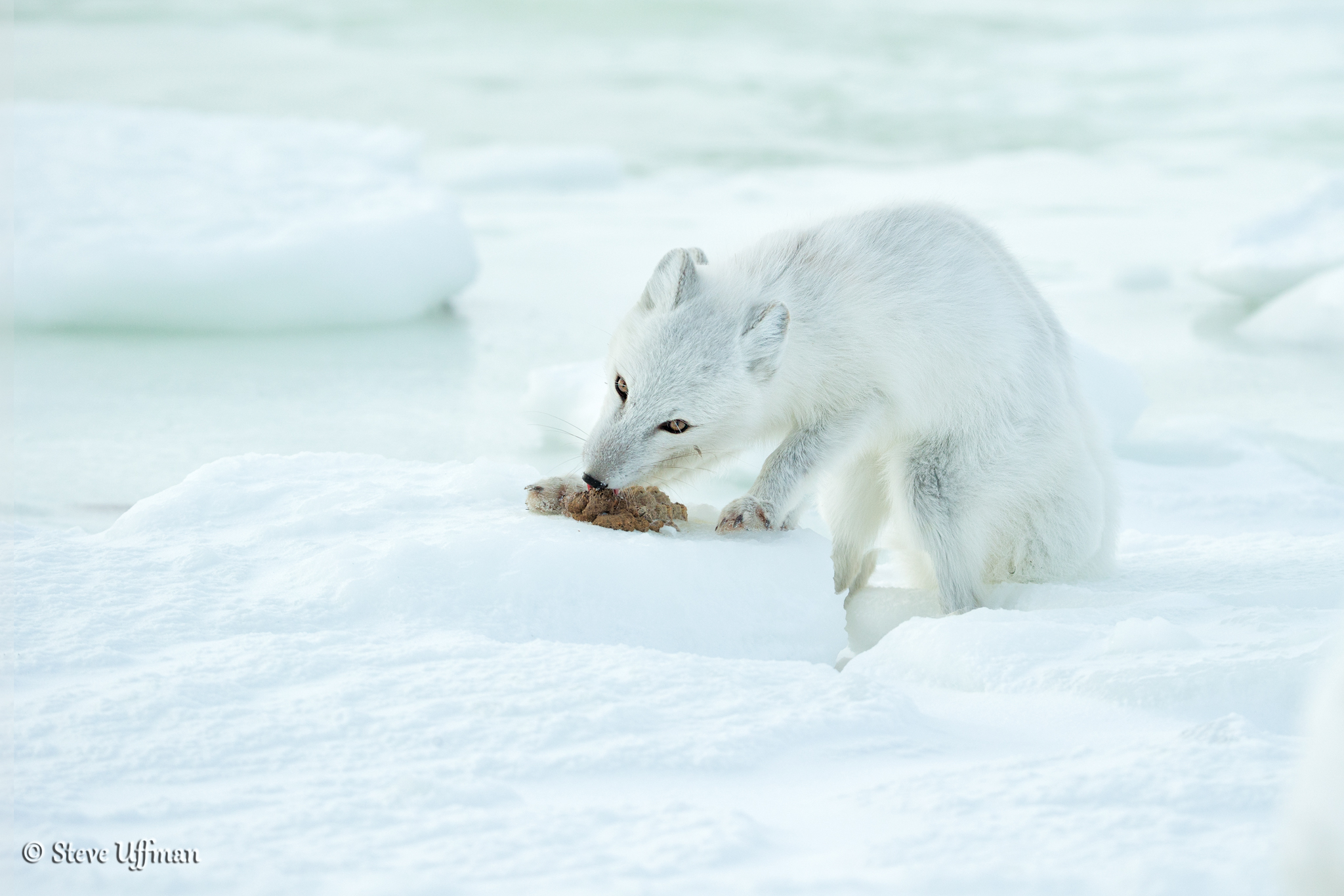 Lemmings are a staple food item for the Arctic foxes. Scientist tell us that the population of these foxes fluctuate with the population of the lemmings-seemingly in a four year cycle.
Lemmings are a staple food item for the Arctic foxes. Scientist tell us that the population of these foxes fluctuate with the population of the lemmings-seemingly in a four year cycle.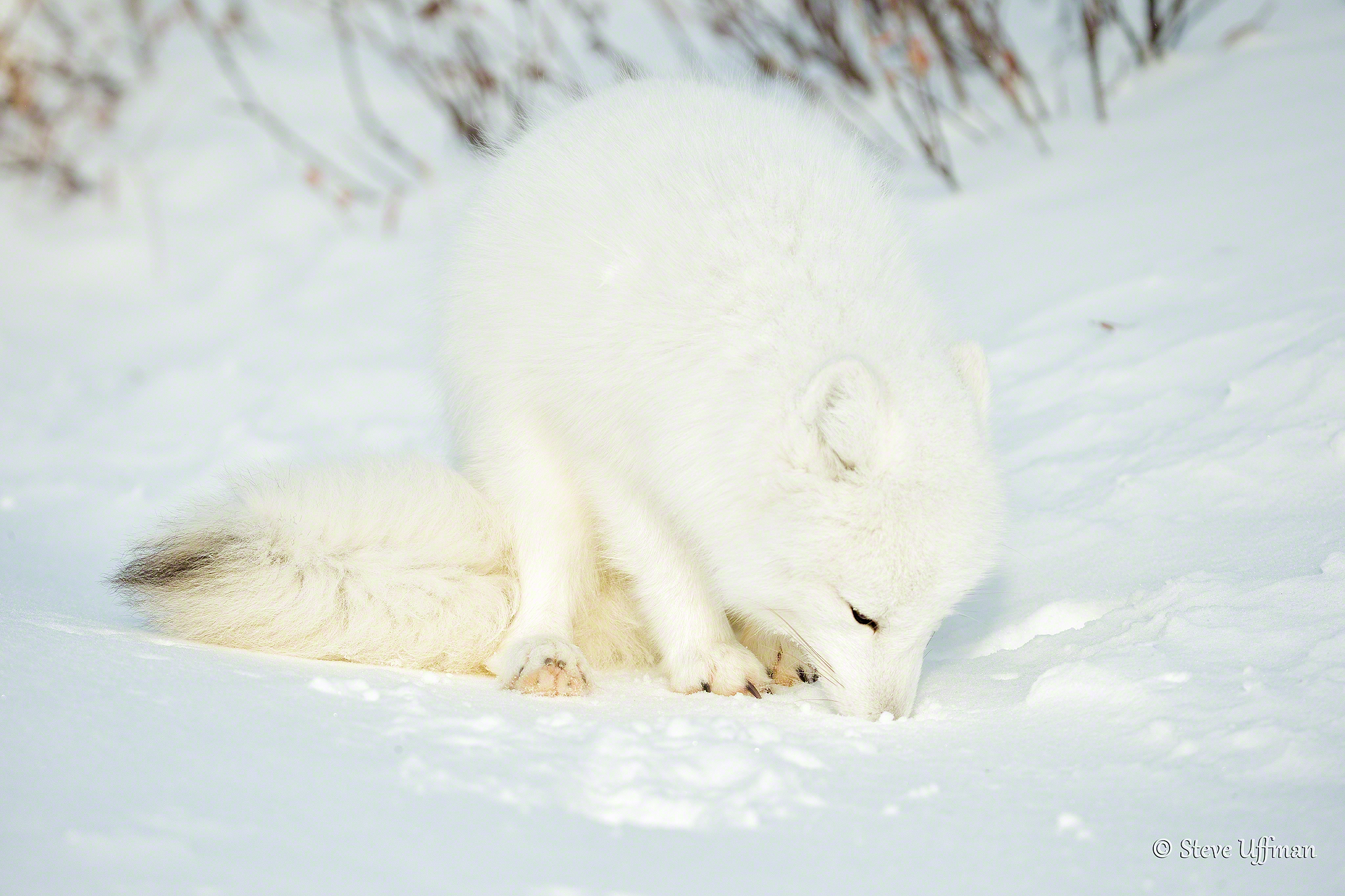 Arctic foxes are well known for an incredible sense of smell. This individual sniffed around and then started to dig through the snow while we watched. Not sure what morsel he came up with as he gobbled it in a flash. While I don’t know for sure, I would guess that the lemming population must have been on the upswing as the number of foxes we saw was simply amazing.
Arctic foxes are well known for an incredible sense of smell. This individual sniffed around and then started to dig through the snow while we watched. Not sure what morsel he came up with as he gobbled it in a flash. While I don’t know for sure, I would guess that the lemming population must have been on the upswing as the number of foxes we saw was simply amazing. 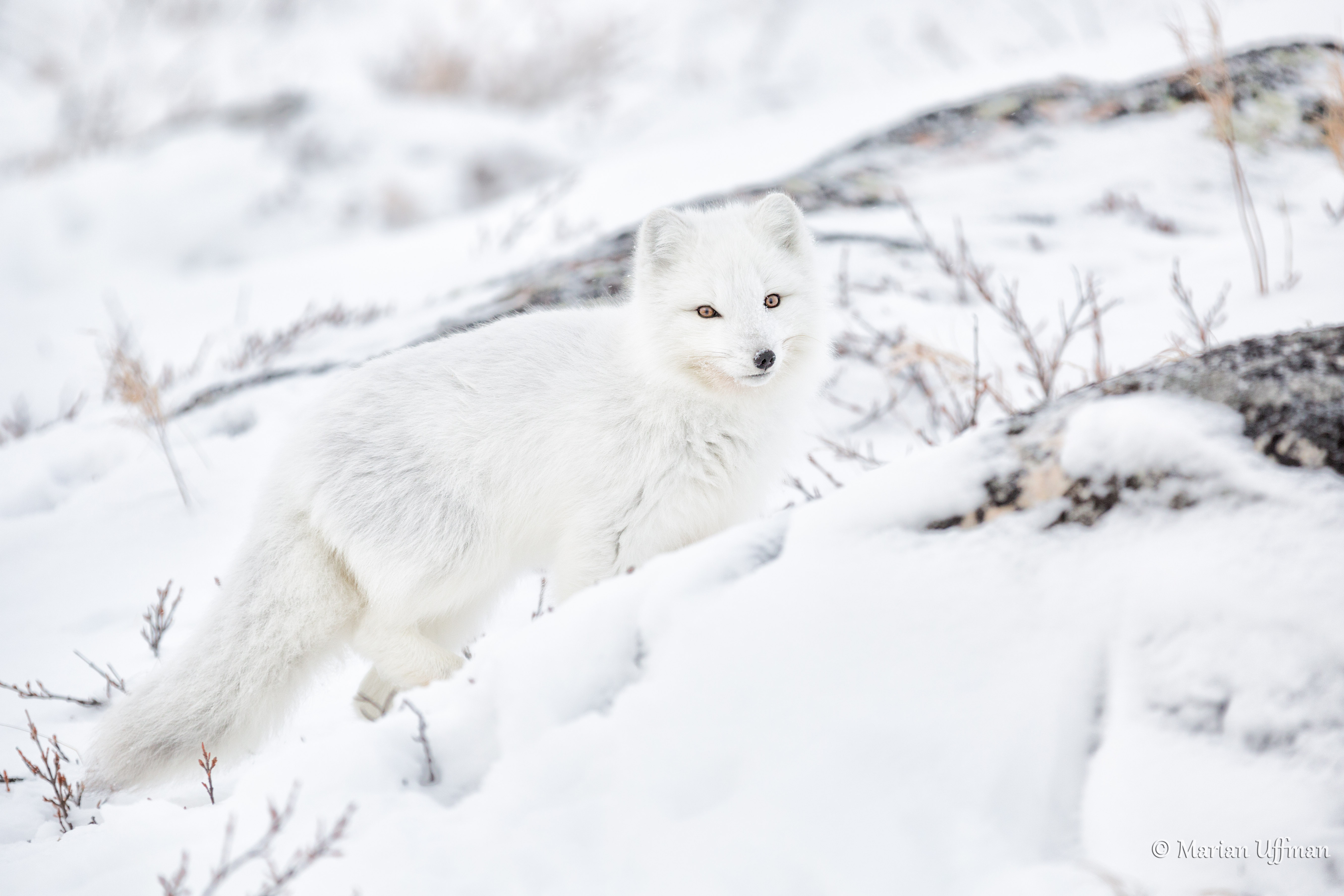 Of course, blending into the landscape helps them occasionally snare a choice Ptarmigan.
Of course, blending into the landscape helps them occasionally snare a choice Ptarmigan. 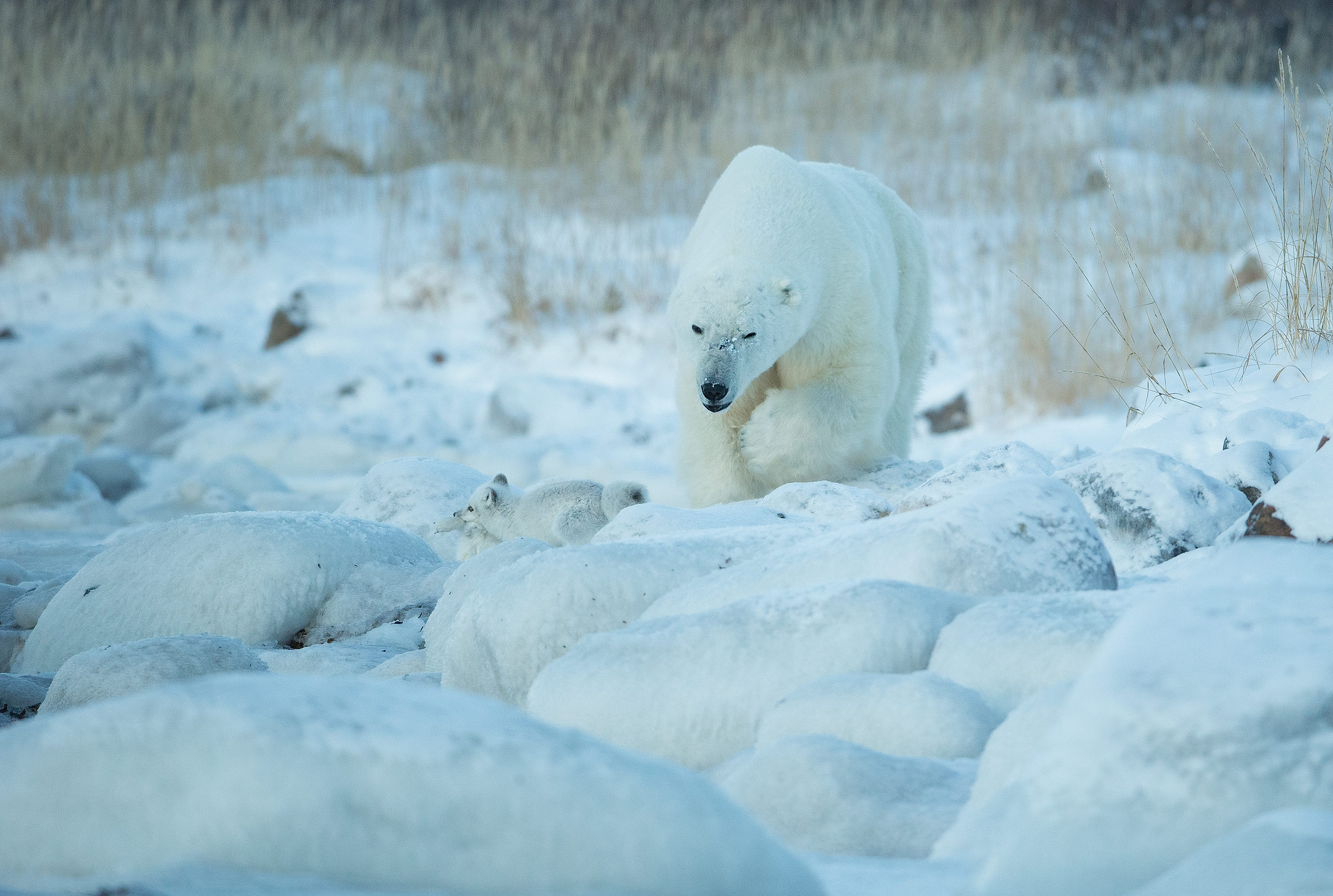 Here an opportunistic fox with a fine catch of a Ptmargian scurries just out of the path of a polar bear.
Here an opportunistic fox with a fine catch of a Ptmargian scurries just out of the path of a polar bear.
These foxes have wide, front-facing ears, which gives them incredible hearing. That hearing allows them to locate prey underneath the snow. 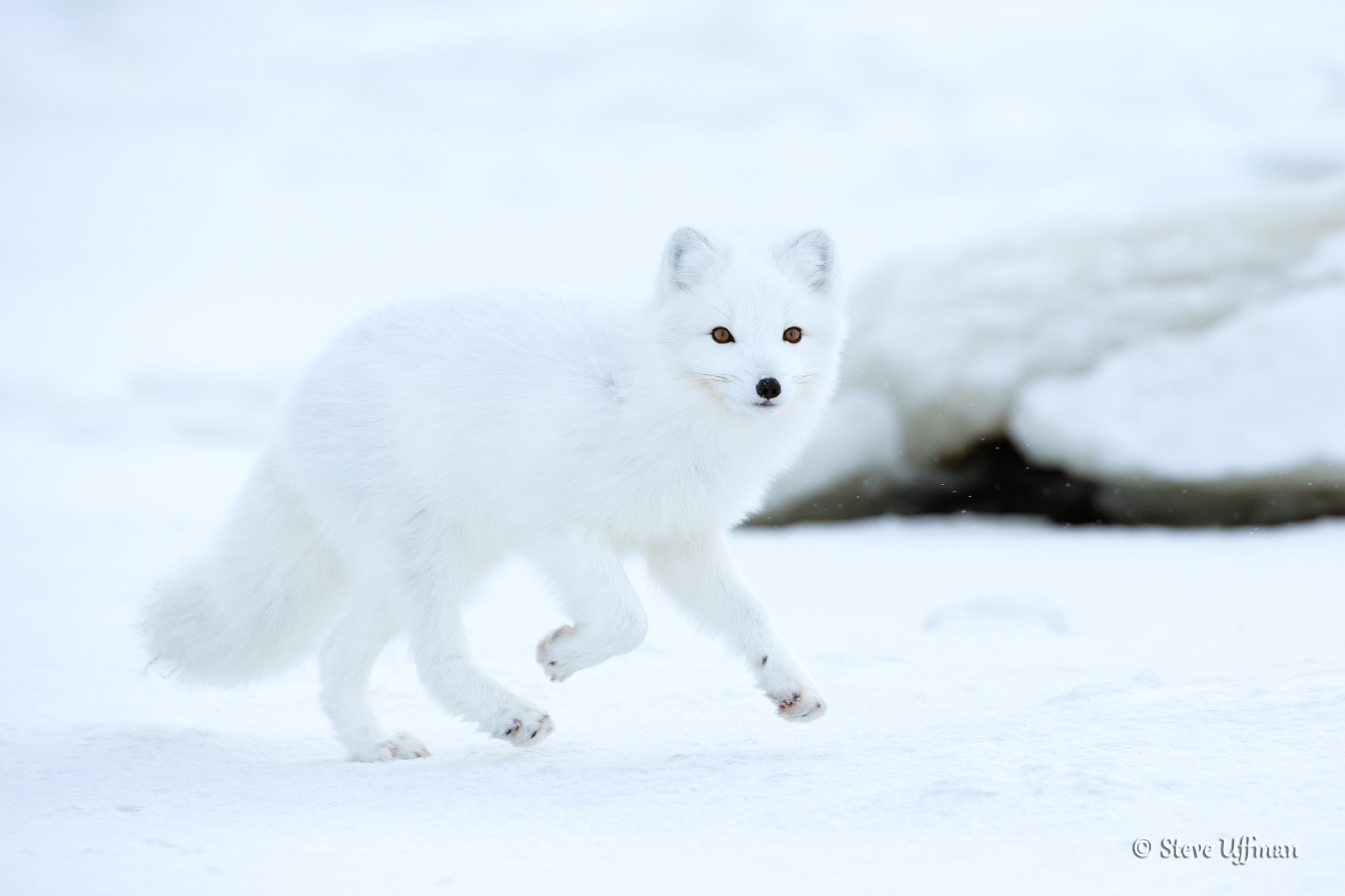 The Arctic fox then will take a big leap in the air and pierce the snow to grab their prey underneath. During the spring and summer, the foxes prey on rodents, fish and birds. Again their spring and summer coloration help them blend into the environment.
The Arctic fox then will take a big leap in the air and pierce the snow to grab their prey underneath. During the spring and summer, the foxes prey on rodents, fish and birds. Again their spring and summer coloration help them blend into the environment.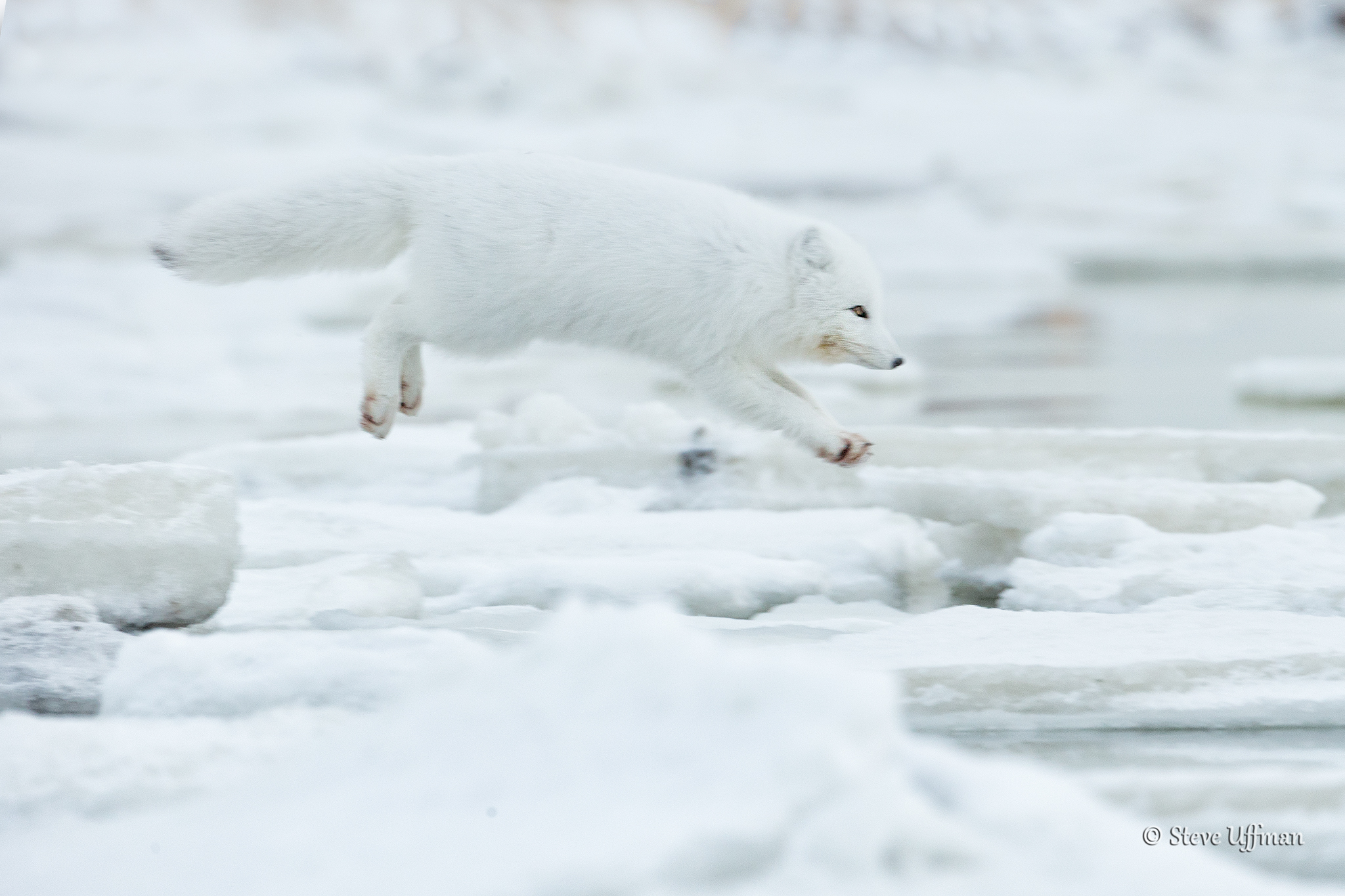
How does such an animal survive in such extreme conditions? First, Arctic foxes have a deep thick fur that scientists say is the warmest of any mammal-warmer than polar bears and arctic wolves. It also has a body shape, short legs, short muzzle, short ears and hairy, padded feet to help it stay warm. And the large bushy tail not only gives it balance but is used as a blanket often covering the face during the coldest of times.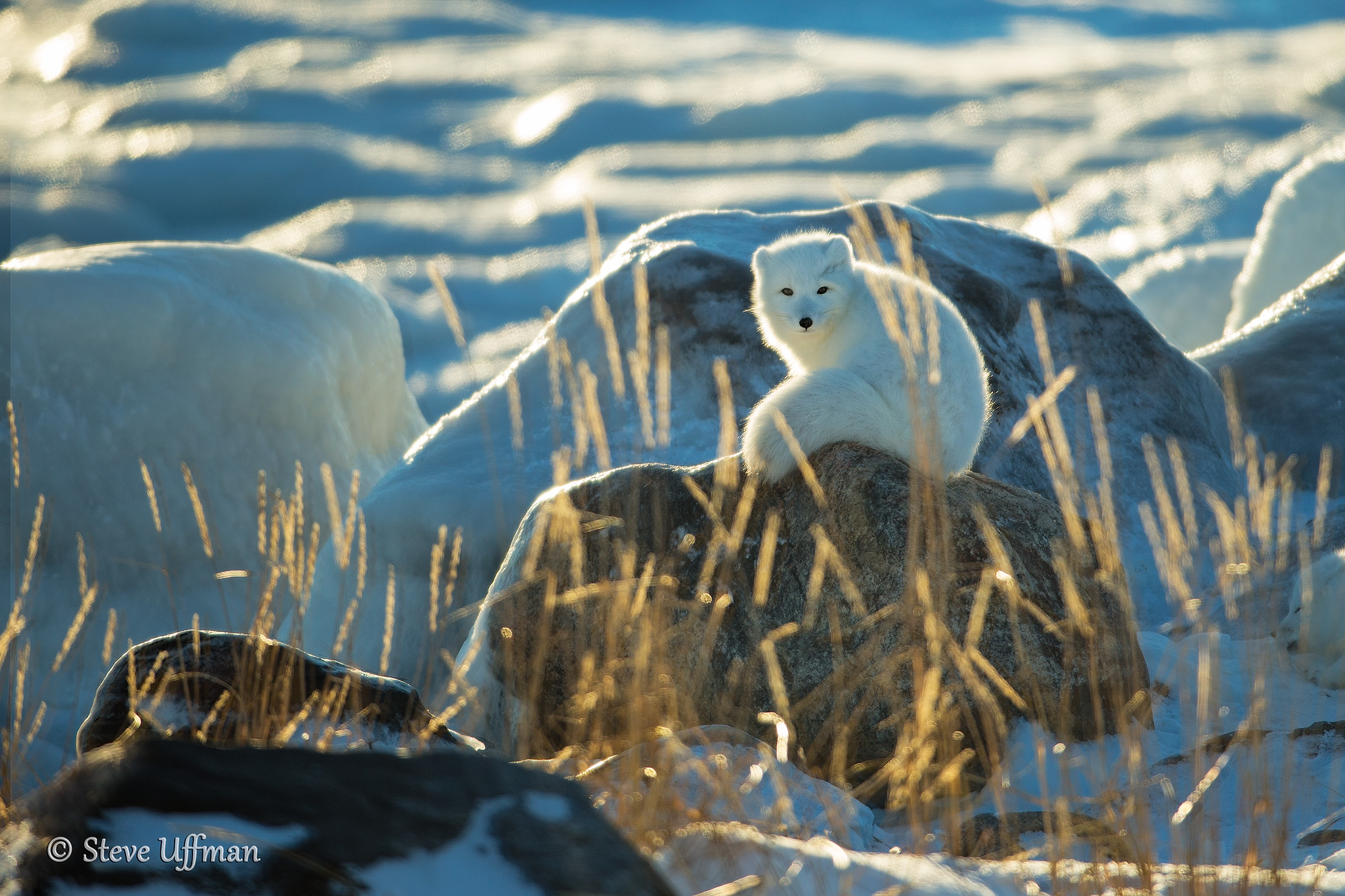
During cold weather, they will burrow to stay warm. That must be a learned behavior as we saw the more mature foxes use rocks as wind breaks while the juveniles would curl up in the open snow and wind.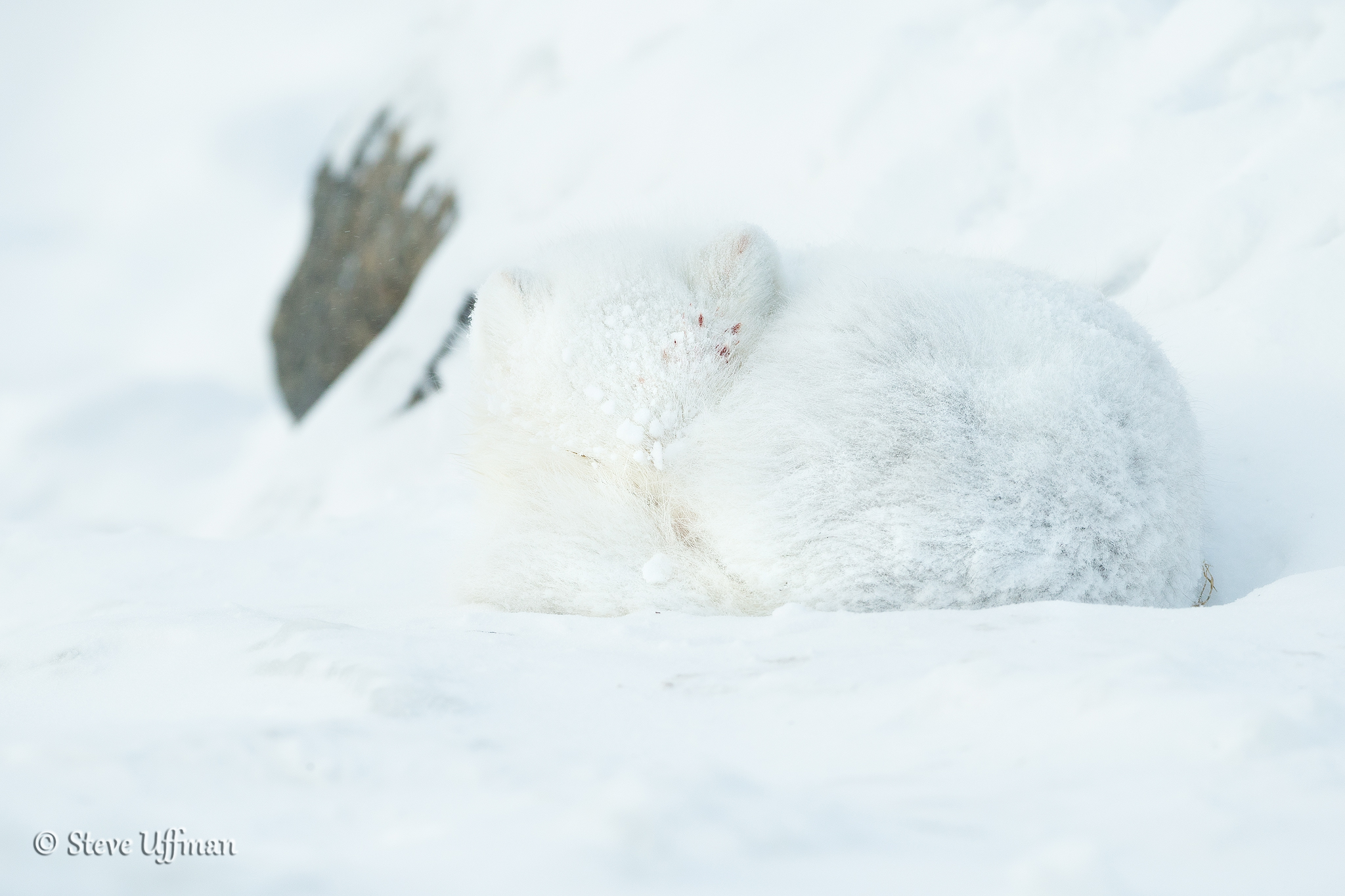 This individual was huddled behind a rock that he was using as a wind break. Apparently from the amount of ice and snow on his fur, he had settled in over night and had not yet awakened to the day’s activities.
This individual was huddled behind a rock that he was using as a wind break. Apparently from the amount of ice and snow on his fur, he had settled in over night and had not yet awakened to the day’s activities.
These animals have large litters averaging nearly 14. Interestingly, the male and female both help in raising the young.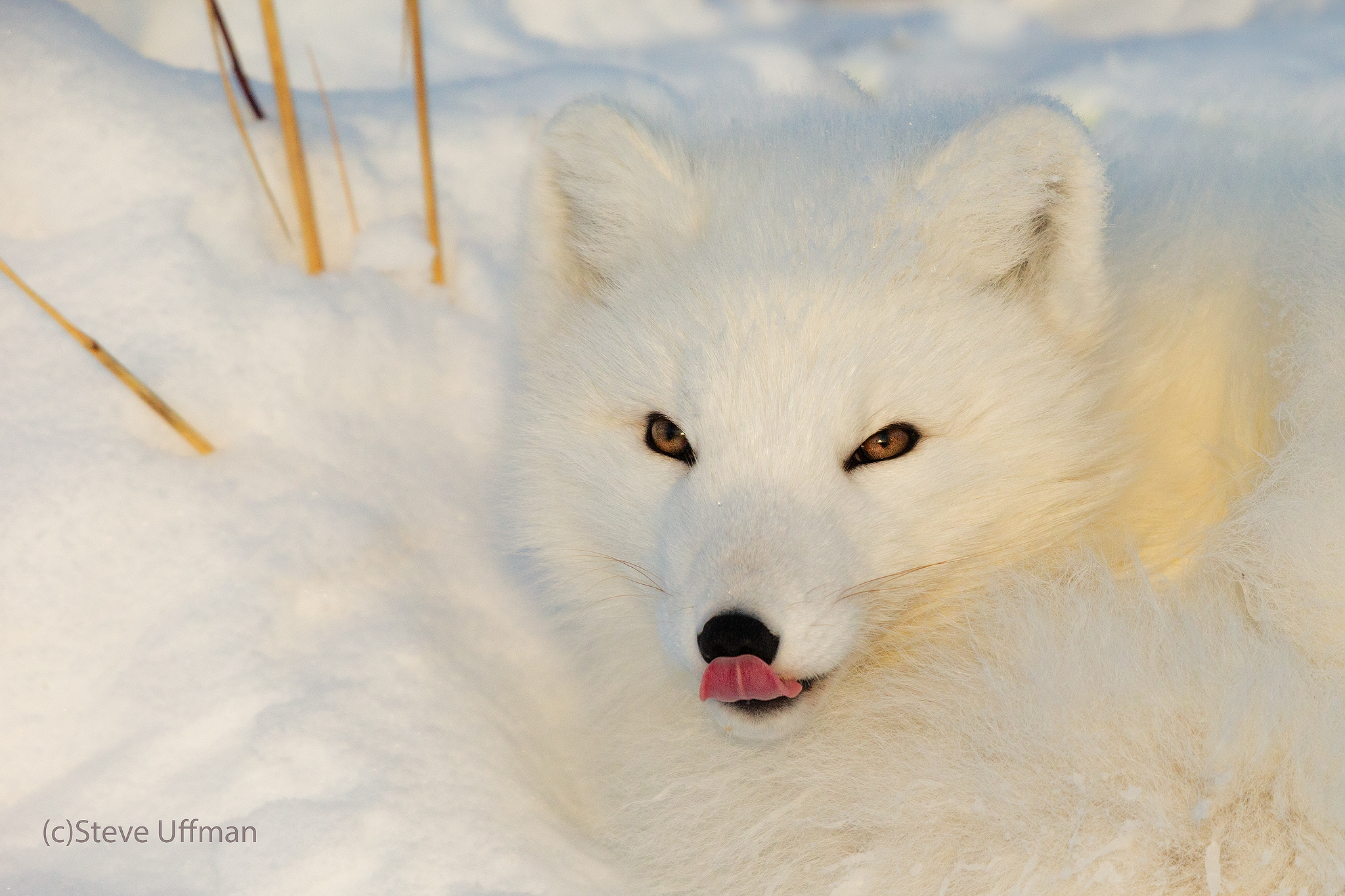
Well that about covers the Arctic Fox for now. Many, many more images of Arctic foxes to edit and get posted on our website. Nevertheless, its time to move on to the caribou which will be the topic for our next blog article. If you would like an email notification when articles are posted here, you can subscribe to the blog by entering your email address in the box on the right. Also, if you like this blog, please feel free to share.

